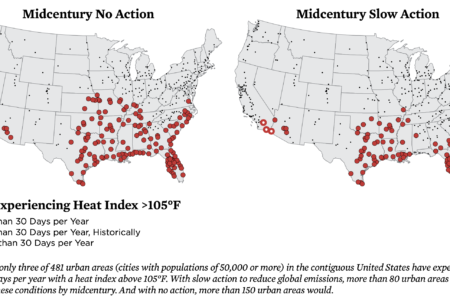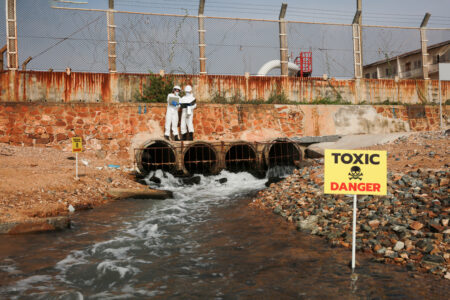
Share On Social!
From New England to the Southwest, Americans are sweating through their shirts as cities across the country experience record-high temperatures.
More importantly, the gauge of how hot a place feels, the heat index, has also been on the rise. The National Weather Service has sent numerous warnings to many areas, cautioning of “prolonged period of dangerously hot temperatures and high humidity.”
Meteorologists attribute this latest heatwave to atmospheric shifts.
Worse, experts and researchers say the heatwave is only one part of the broader climate crisis problem — one that could lead to nearly 300 cities becoming uninhabitable.
“Think about the most extreme summer heat you’ve ever experienced in your lifetime. That will become a typical summer day by the middle of this century if we continue on the path that we’re on,” Dr. Michael Mann, the director of the Penn State Earth System Science Center, told the New York Times.
What’s Going On?
The current American heatwave is the cause of a “heat dome.”
This natural event that occurs when dramatic temperature shifts in the ocean that creates a contained space of hot air that is pushed toward, in this case, middle-America. Once settled, the dome then spreads.
However, the big-picture issue is worse than most imagine.
Initial data from the World Meteorological Organization (WMO) shows that July was the hottest month on record for the entire planet.
“The extraordinary heat was accompanied by dramatic ice melt in Greenland, in the Arctic and on European glaciers,” WMO Secretary-General Petteri Taalas said. “Unprecedented wildfires raged in the Arctic for the second consecutive month, devastating once pristine forests. This is not science fiction. It is the reality of climate change. It is happening now, and it will worsen in the future without urgent climate action.”
More importantly, these heat levels can cause numerous health problems for many — even fatalities. Last year alone, the National Oceanic and Atmospheric Administration attributed 108 deaths to extreme heat, according to the Times.
Why Is This Happening?
The heat-index and problems it causes will continue to rise unless dedicated, rapid action is taken, according to researchers from the Union of Concerned Scientists (UCS).
In their recent report, “Killer Heat in the United States,” the group illustrated how climate change is causing the current rise in heat.
Their findings show that if elected officials do not step up soon, the picture will only get much worse.
“With no action, 292 of these urban areas would see an average of 30 or more days per year with heat index values above 105°F by late century. The good news is that we can limit such conditions to 85 cities if we take rapid action,” writes Juan Declet-Barreto, an author of the report and climate scientist with UCS. 
Worse, this problem will diametrically impact Latino and other communities of color, low-income families, the homeless, and other disadvantaged groups at higher rates than their white peers, according to the study.
“Even within a given setting, such as a city, vulnerability to heat is not equally distributed,” the UCS report states. “Centuries of social discrimination and subsequent uneven opportunities for economic advancement have forced part of our population—disproportionately minorities and people experiencing poverty—into a state of heightened exposure and vulnerability to climate-related threats.”
Experts note the only way to fix these problems is action, now.
USC scientists recommend numerous ways to get on the right path, including:
- Putting the nation on a rapid path to reduced emissions
- Investing in climate-smart power systems
- Investing in heat-smart infrastructure
- Citizen action and advocacy fighting against a hot future
“We have no time to waste to prevent an unrecognizably hot future from becoming reality,” UCS researchers write. “We must act now to address the climate crisis.”
Editor’s Note: This article is part of a collaboration between Salud America! and the Hoffman Toxicant-Induced Loss of Tolerance (TILT) program at UT Health- San Antonio. To find out if you experience TILT from everyday food, chemical, or drug exposure, take a self-assessment or learn more about TILT.
By The Numbers
1
Quick Survey
Can help you find out how chemically sensitive you are



